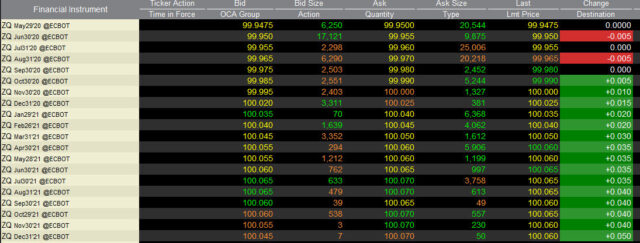Alternative title: Gran Colombia Gold’s confusing capital allocation strategy, part 4; (See also: Gran Colombia Gold’s confusing capital allocation strategy, part 1, part 2, and part 3)
(This was supposed to be published the evening of May 5th, but for some reason, I forgot to hit the button until May 11th)
One of the reasons why one of my policies are to be very, very careful before investing in any gold mining equities is that management in these industries is usually less than efficient with shareholder capital, especially when they have lots of it. Right now things are flying high in the gold mining industry because of the US$1,700/Oz commodity price and the general public fear and panic out there due to the aftermath of COVID-19, and looming large government deficits, and just general doom and gloom.
My personal take on the matter is if you believe gold is going to do well, just invest in long-dated commodity futures at a reasonable amount of leverage instead of playing around with companies that are most likely blow your capital away.
Or you can take a debt investment in such companies, where in that case you don’t really care how much management blows shareholder capital short of stunting their ability to pay you back, but a debt investment (in non-distressed situations) defeats the purpose of investing in such companies (i.e. you want double digit returns).
Imagine my thoughts when Gran Colombia Gold (TSX: GCM) announced the following:
Gran Colombia Gold Corp. (TSX: GCM; OTCQX: TPRFF) announced today that it has signed a Letter of Intent (“LOI”) with Renergetica Colombia S.A.S. (“Renergetica”), a subsidiary of Renergetica S.p.A., a developer in the field of renewable energy and of the smart grid worldwide and an independent power producer and asset manager for third party investors. The LOI encompasses Gran Colombia’s acquisition, through its Segovia Operations, of a solar project with a total installed capacity of 11.2 MW of power called “Suarez”, located in the Tolima Region, Colombia (the “Suarez Project”).
Lombardo Paredes, Chief Executive Officer of Gran Colombia, said, “As the leading gold and silver producer in Colombia, we focus our ESG programs on health, education, community and the environment in the areas in which we live and operate. We see the opportunity to invest in renewable energy initiatives, such as the Suarez Project, as the next step in doing our part to combat global warming. With the new Suarez plant, approximately 10,300 tons of CO2 per year will not be released into the environment. We look forward to partnering with Renergetica to make this solar project a reality.”
The Suarez Project is the first project of a pipeline under development by Renergetica in Colombia. Expected to have a 30-year life, the Suarez Project will connect to the Colombian National Electric System and will become operational later in 2020. The capital cost of the Suarez Project, expected to total approximately $8 million, may be financed by up to 70% through local banks involved in “green financing” and will benefit from special tax incentives in Colombia on investments in renewable energy.
Recall on March 1, 2019 the company attempted to raise financing, citing that they wanted to accelerate drilling in their Segovia mine, even though they had sufficient cash on hand and cash flows to do it internally. They have done a couple financings since, in addition to more financings on their separately publicly traded entities (other gold mining projects). You can at least make a justification for raising capital and spending it in majority-owned public entities in the name of gold mining.
But this press release to invest capital in a solar project in the name of ESG? If I owned shares in GCM (I do not), I’d be really wondering.
Hence the title of this post – I invested in a gold mine, but I got a solar project instead!

